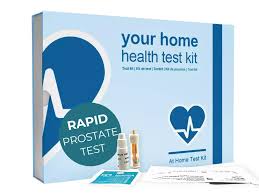In my opinion, prostate health care, is a bit like maintaining a car. You don’t need to be a mechanic, but understanding the basics goes a long way.
So, if you didn’t know, the prostate is a small gland in the male reproductive system that plays a crucial role in both urinary function and sexual health. It’s not just about preventing discomfort; a well-functioning prostate is vital for overall well-being.
Things To Look Out For
- Difficulty starting urination.
- Weak or interrupted flow of urine.
- Urinating often, especially at night.
- Trouble emptying the bladder completely.
- Pain or burning during urination.
- Blood in the urine or semen.

You’re going to find out about the subtle differences between a healthy and an unhealthy prostate. Symptoms like difficulty urinating or frequent urges to go can be red flags, indicating it’s time for a professional check-up. On the flip side, a lack of disruptive urinary symptoms usually suggests your prostate is in pretty good shape.
And guess what? Your lifestyle choices seriously impact your prostate health. Regular exercise, a balanced diet, and adequate hydration are like the oil and filters for your car – they keep everything running smoothly. Moreover, routine check-ups can act as your regular maintenance schedule, catching any potential issues before they escalate.
Now, you might wonder how exactly you can monitor your own prostate health at home. Hold that thought, because that’s going to include learning to do a self-check . It’s a valuable & simple test and I’m here to guide you through that in the next section.
Self-Test Kit: Monitoring Your Prostate at Home
I’m going to show you how to be proactive about your prostate health right from the comfort of your home. Now, self-checks don’t replace professional screenings, but they can be a handy tool in your health toolkit & done yearly, you can see any change or not .
So, you’re interested in learning how to do a self-test? It’s not difficult, but it does require you to follow the instructions fully for which ever test kit you choose.I’m here to help you with a straightforward, step-by-step guide on how to perform a self-PSA test.
What is a selfcheck prostate health test?
The selfcheck prostate health test is a home test kit to test PSA (prostate specific antigen) levels in the blood. These levels indicate the health of your prostate.

What’s included in the selfcheck prostate test?
Each pack contains:
- One test device
- Dropper
- Test solution
- Lancet
How long does it take to get the results?
A visible result is achieved within 10 minutes
Why should I test for PSA levels?
Prostate specific antigen, or more commonly known as PSA, is a protein produced by the prostate and released into the blood stream in very small quantities. If there is a problem with the prostate, more PSA is released.
Prostate problems that cause elevated levels of PSA could be :-
- Prostatitis (inflammation of the prostate gland)
- Enlarged prostate
- Prostate cancer
Who should test for PSA?
It is recommended in men aged 40 and highly recommended in the 50 & overs.
What are the risk factors for prostate cancer?
In the US, about 13 in every100 men will be diagnosed with prostate cancer at some point in their lives. Prostate cancer mainly affects men over 50, and your risk increases with age.
The average age for men to be diagnosed with prostate cancer is between 65 and 69 years. If you are under 50, your risk of getting prostate cancer is very low. Men under 50 can get it, but it’s not common.
If people in your family have prostate cancer or breast cancer, it might increase your own risk of getting prostate cancer. This is because you may have inherited the same faulty genes.
Research suggests that being overweight can increase your risk of getting with prostate cancer and so it’s very important to try to maintain a healthy weight.
How often should PSA levels be checked?
Men over the age of 40 should have their PSA levels tested regularly to detect potential signs of prostate problems early. Healthy individuals would benefit from annual checks.
What should you do if your PSA level is outside of the norm?
In all cases you should consult your Health Practioner. Do not make any medical decisions without consulting them.
What are the features and benefits of selfcheck prostate health test?
- Each pack contains everything you need to complete a full test
- The test is able to detect heightened levels of PSA in the blood, giving opportunity for early detection of potential problems with the prostate
- Easy to use – only one drop of blood is required
- Test at home and see the results in 10 minutes! No need to send off for results
- All test components can be disposed of in household waste once used
- No need to alter food intake or fast before the test
- Reliable result that gives you an accurate indication of your PSA
Instruction Leaflet
Below is an example of how to use a home test kit, to give you an idea.
You will see that it basically looks like a covid test kit.
Using the Lancet, prick your finger to get a drop of blood
Put the drop of blood onto the tester
Wait to see if a line or lines appear.

That’s it.
So 1 line is a negative, 2 lines are a positive test and no lines means it didn’t work.
SELFCheck prostate instructions
Further information on PSA testing by your Doctor
Don’t worry about making a diagnosis yourself; that’s what the professionals are for.
For you it’s about being informed and aware.
And remember, home checks have their limits.

Only a comprehensive check by a healthcare professional can give you a complete picture of your prostate health. That’s going to include a physical exam and probably another diagnostic PSA blood test or an MRI scan.
So now that you’ve got the basics on self-check techniques, it’s time to delve into keeping your prostate in good shape through lifestyle choices.
And guess what? It could be simpler than you think.
Maintaining a Prostate-Friendly Lifestyle
If you want to keep your prostate in tip-top shape, a healthy lifestyle is crucial. I’m here to help you with a range of lifestyle strategies that can promote prostate health.
Let’s talk food first. Your diet plays a significant role in maintaining a healthy prostate. Foods rich in antioxidants, such as fruits and vegetables, are great. Choose something that resonates with you, like tomatoes, which are packed with lycopene, a nutrient highly beneficial for prostate health. Green tea is also packed with antioxidants.

On the other hand, aim to reduce red meat and high-fat dairy products, which can increase prostate cancer risk.
Regular physical activity is another cornerstone of prostate wellness. Whether it’s a brisk walk, a swim, or a bike ride, finding an exercise you enjoy can help you stick with it. Just don’t focus too much on perfection; any exercise is better than none at all. Physical activity helps to maintain a healthy weight, which is important because obesity can be a risk factor for prostate issues.

Chronic stress can take a toll on the body, and the prostate is no exception. Incorporating stress-reduction techniques such as meditation, yoga, or deep breathing exercises into your daily routine can make a world of difference.
Your first attempt doesn’t need to be your last. If one approach isn’t working for you, feel free to adjust your strategy down the road. Each step you take towards a healthier lifestyle can contribute to lower risks for prostate diseases.
Navigating the Risks: Prostate Cancer Awareness
Now, understanding prostate health doesn’t just stop at keeping it healthy; it’s also about being aware of the risks, including prostate cancer. In my opinion, the key to fighting this disease is knowledge and proactive steps for prevention and early detection.
If you’re wondering about risk factors for prostate cancer, you should know they can include age, family history, and lifestyle choices. Tests are recommended based on your specific risk factors.

There’s good news on the horizon, too. Advances in medical research are leading to better treatments and management strategies for prostate cancer.
This isn’t just hopeful talk; survival rates are improving, and options are expanding.
In the spirit of taking control of your health, it’s not all about medical intervention. Choose lifestyle adjustments, like a balanced diet and regular exercise, proven to support prostate health and possibly reduce cancer risks. And if you want to keep abreast of the latest in prostate health, staying in touch with healthcare providers and authoritative sources can offer peace of mind and essential guidance.
Prostate health is a crucial aspect of men’s health, and I hope this article has empowered you with the knowledge to make informed decisions about your well-being. Regular check-ups, a healthy lifestyle, and staying informed are your best defense against prostate-related issues. Keep these practices up, and remember, taking action today could make all the difference tomorrow.
Thanks for taking the time to read this article. I hope it helped you out & if you have questions or comments, feel free to ask them below & I will get back to you.
Cheers for now, Duncan.





Great article. I never knew that I could do a simple test at home. That’s really great.
If everyone read about this, it really would make a difference.
Thanks for your comment Andy & if this article helps 1 guy against prostate cancer, that would be worth my while to have written it.